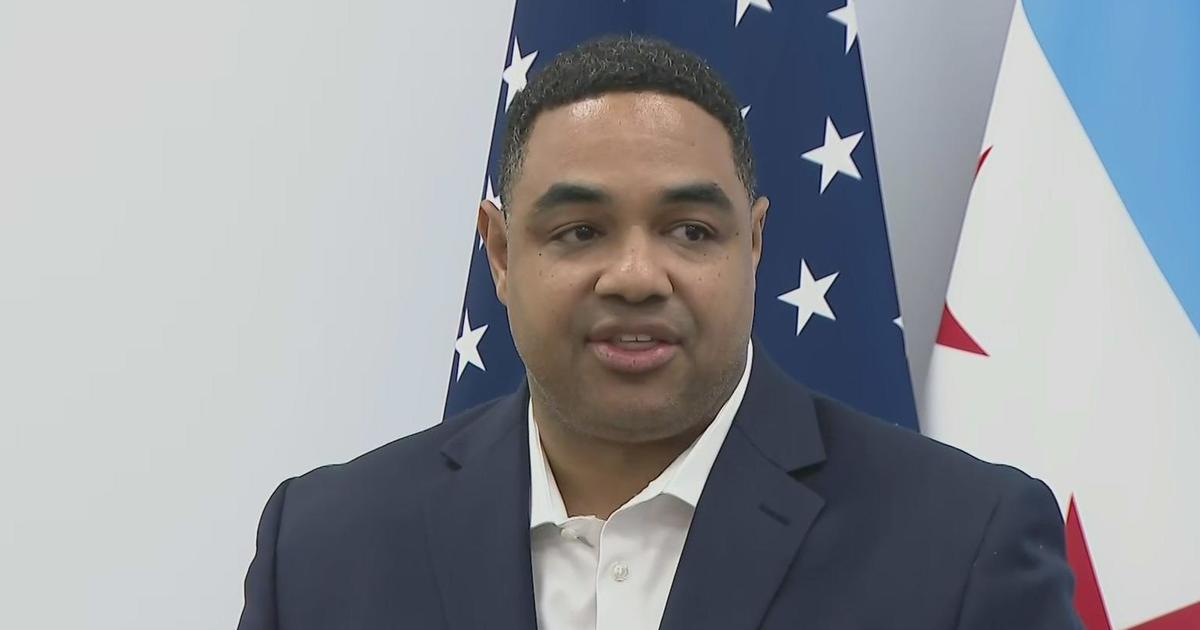Pritzker: Illinois Won't Move To Phase 5 Until Vaccine Is Available
CHICAGO (CBS) -- Illinois Governor JB Pritzker said despite the low rolling average of COVID-19 cases in the state, he will not allow the state to move to Phase 5 for reopening until a vaccine is available.
For now, to try to stop the spread of COVID-19, Pritzker announced a new mitigation plan to prevent an uptick in cases.
Illinois went into Phase 4 of the Restore Illinois plan to reduce the spread of COVID-19 throughout the state back in June. He said because of the public's adherence to the COVID-19 rules, the state's numbers are relatively low compared to other states. Pritzker said Illinois has the lowest infection rate compared to its neighboring states.
More than two million people have been tested for COVID-19 in Illinois.
"We have one of the lowest positivity rates in the country. And it's because of the individual actions of millions of our residents," said the governor. "Epidemiologists and professionals and IDPH have determined that we need to take action in a region if we see a sustained rise in the positivity rate, along with either a sustained increase in COVID-19 hospital admissions, or a reduction in hospital service capacities."
More than 7,000 people have died in Illinois because of COVID-19. Moving forward, Pritzker said Illinois will stay in Phase 4 for the foreseeable future.
"We cannot reach Phase 5 until there's a vaccine, effective treatment "where the elimination of new cases over a sustained period of time."
For Wednesday, IDPH said there were 1,187 new confirmed COVID-19 cases, including eight additional deaths.
Pritzker and Illinois Department of Public Health (IDPH) Director Dr. Ngozi Ezike put out a new mitigation plan to continue the progress of how the state has worked on to bend the curve over the past four months.
"Opening up our economy does not have to come with a spike in cases. Other countries have done it successfully while reducing cases and infection rates. But that requires vigilance on the part of all of us," Pritzker said. "It's imperative that individuals, families, workers and businesses follow the recommendations doctors have given about vital mitigations and that we act quickly if we see any outbreaks and upticks, signs that could lead to a surge of coronavirus infections."
According to IDPH Director Doctor Ngozi Ezike, the state is following numbers, metrics and trends associated with infection rates of the coronavirus.
"We can then take targeted actions within specific regions to help mitigate the spread of this deadly disease while keeping as much of our state open as possible," Ezike said.
Part of the new strategy includes examining the following metrics that can indicate the spread of COVID-19.
*Sustained increase in seven-day rolling average (seven out of 10 days) in the positivity rate and one of the following severity indicators:
-
- Sustained seven-day increase in hospital admissions for a COVID-19 like illness
- Reduction in hospital capacity threatening surge capabilities (ICU capacity or medical/surgical beds < 20%)
- Or three consecutive days averaging ≥ 8% positivity rate
There's also a reset of geographic regions throughout the state, expanding the number to 11. That will allow public health officials to work on response efforts. Emergency Medical Services (EMS) Regions will "allow" for a more granular approach in this phase of the response to COVID-19. One includes having the city of Chicago as its own region and Cook County as another.
The new regions are:
- NORTH: Boone, Carroll, DeKalb, Jo Daviess, Lee, Ogle, Stephenson, Whiteside, Winnebago
- NORTH-CENTRAL: Bureau, Fulton, Grundy, Henderson, Henry, Kendall, Knox, La Salle, Livingston, Marshall, McDonough, McLean, Mercer, Peoria, Putnam, Rock Island, Stark, Tazewell, Warren, Woodford
- WEST-CENTRAL: Adams, Brown, Calhoun, Cass, Christian, Greene, Hancock, Jersey, Logan, Macoupin, Mason, Mason, Menard, Montgomery, Morgan, Pike, Sangamon, Schuyler, Scott
- METRO EAST: Bond, Clinton, Madison, Monroe, Randolph, St. Clair, Washington
- SOUTHERN: Alexander, Edwards, Franklin, Gallatin, Hamilton, Hardin, Jackson, Jefferson, Johnson, Marion, Massac, Perry, Pope, Pulaski, Saline, Union, Wabash, Wayne, White, Williamson
- EAST-CENTRAL: Champaign, Clark, Clay, Coles, Crawford, Cumberland, De Witt, Douglas, Edgar, Effingham, Fayette, Ford, Iroquois, Jasper, Lawrence, Macon, Moultrie, Piatt, Richland, Shelby, Vermillion
- SOUTH SUBURBAN: Kankakee, Will
- WEST SUBURBAN: DuPage, Kane
- NORTH SUBURBAN: Lake, McHenry
- SUBURBAN COOK: Suburban Cook
- CHICAGO: City of Chicago
"The goal of the regional lines is in large part to make sure that there is healthcare availability. These mitigations cover categories like bars and restaurants meetings, social events, religious gatherings and organized recreational activities like adult and youth sports in each category we have three tiers of mitigations, allowing us to move carefully but deliberately depending upon the severity of the situation to control the spread of the virus, while continuing to allow a region to be open to the greatest extent possible," Pritzker said.
The governor reiterated his stance that the best available form of protection is for people to frequently wash their hands, wear a face mask and maintain social distancing practices. Doctor Ezike said the preventative efforts early on helped to slow the spread of COVID-19.
"We stayed home, initially and we made it very hard for the virus to find people to infect. And that was so key and that's why we're sitting on the success that we have," Ezike said. "We went from having 800 individuals lose their lives in one week to having under 200. And of course 200 under 200, 150 is still too much. But please appreciate that significant decline."
Both Ezike and Pritzker noted it's younger people who are making up the majority of new COVID-19 cases. They sent out a plea to young people to watch what they do.
"Please be aware that young people, again, breaking off the age ranges in decimals ages 10 to 19 and ages 20 to 29, they are having higher case rates now than ever before in this pandemic. We are following this very closely, but young people, and parents of young people, please be aware. This virus is now being spread by youth by younger people. So young people, we need you to make responsible decisions to help us continue to keep our successes and decrease minimize spread," Ezike said.






